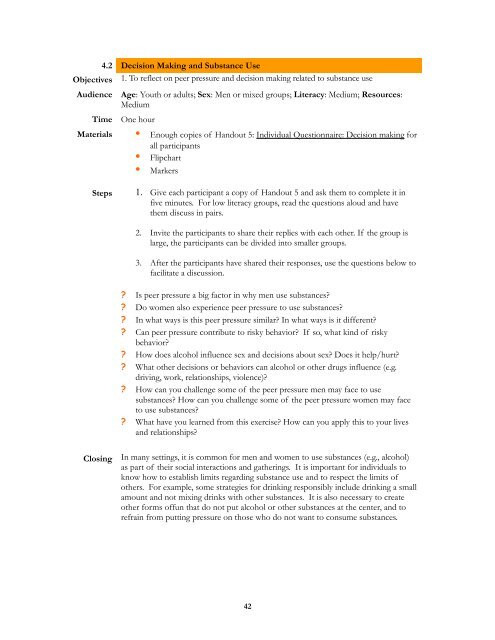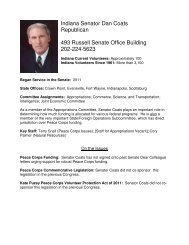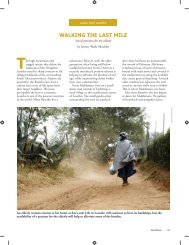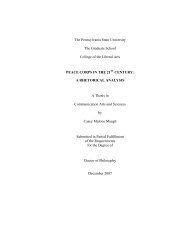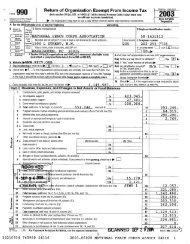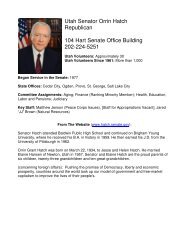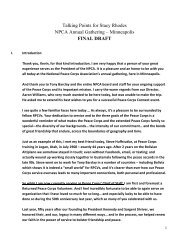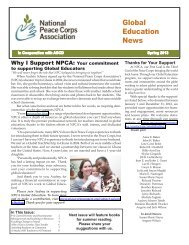Group Education Manual - Peace Corps Wiki
Group Education Manual - Peace Corps Wiki
Group Education Manual - Peace Corps Wiki
You also want an ePaper? Increase the reach of your titles
YUMPU automatically turns print PDFs into web optimized ePapers that Google loves.
4.2 Decision Making and Substance UseObjectives 1. To reflect on peer pressure and decision making related to substance useAudienceTimeAge: Youth or adults; Sex: Men or mixed groups; Literacy: Medium; Resources:MediumOne hourMaterials • Enough copies of Handout 5: Individual Questionnaire: Decision making for•all participantsFlipchart• MarkersSteps1. Give each participant a copy of Handout 5 and ask them to complete it infive minutes. For low literacy groups, read the questions aloud and havethem discuss in pairs.2. Invite the participants to share their replies with each other. If the group islarge, the participants can be divided into smaller groups.3. After the participants have shared their responses, use the questions below tofacilitate a discussion.? Is peer pressure a big factor in why men use substances?? Do women also experience peer pressure to use substances?? In what ways is this peer pressure similar? In what ways is it different?? Can peer pressure contribute to risky behavior? If so, what kind of riskybehavior?? How does alcohol influence sex and decisions about sex? Does it help/hurt?? What other decisions or behaviors can alcohol or other drugs influence (e.g.driving, work, relationships, violence)?? How can you challenge some of the peer pressure men may face to usesubstances? How can you challenge some of the peer pressure women may faceto use substances?? What have you learned from this exercise? How can you apply this to your livesand relationships?ClosingIn many settings, it is common for men and women to use substances (e.g., alcohol)as part of their social interactions and gatherings. It is important for individuals toknow how to establish limits regarding substance use and to respect the limits ofothers. For example, some strategies for drinking responsibly include drinking a smallamount and not mixing drinks with other substances. It is also necessary to createother forms offun that do not put alcohol or other substances at the center, and torefrain from putting pressure on those who do not want to consume substances.42


